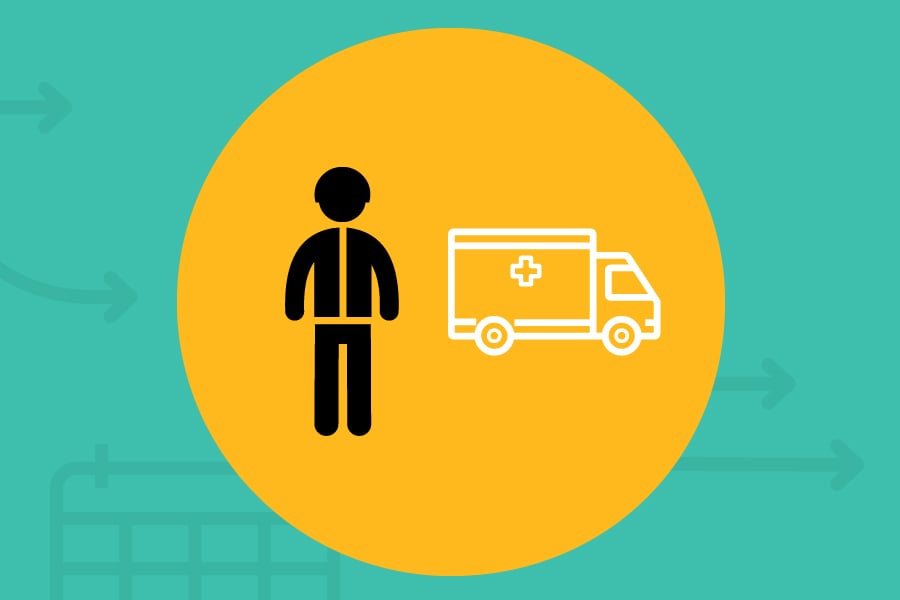Outbreak response: Logistics and security specialist

Share this step
In Week 1, we learned about the different areas of an outbreak response in which logisticians work. In this step, Megan Bassford, Petra Straight, and colleagues (Save the Children) will further describe the specific activities that a logistician will do to help control an outbreak.
1) What are the key logistics and security activities in an outbreak response?
During an outbreak response, logistics teams play several key roles in collaboration with the other teams on the ground:
1. Identifying and quantifying likely stock requirements across all teams involved in the outbreak response:
-
When a list of essential stock has been developed as part of outbreak preparedness planning, an outbreak alert prompts logisticians to review this list with the teams to check if it is suitable. If necessary, modifications are made to suit the specifics of a particular outbreak.
-
If there are no pre-agreed supplies lists, these need to be agreed at the time of the response; however, at this point, resources are already stretched so having the time and the right people available to do this can be challenging. The procurement process also requires certain frameworks to be established, which in themselves can be lengthy processes (sourcing, tendering, analysis, etc). If these are done at the time of the response, this can cause delays of weeks or months in receiving supplies. Where framework agreements exist (because they have been established during preparedness activities) supplies can be mobilised much faster – also allowing more predictability of availability and quality of supplies.
2. Market survey and procurement planning
-
If a market survey has been carried out as a preparedness activity, when an outbreak alert is triggered, logisticians conduct rapid assessments to understand any changes to the logistics assessment baseline for the specific outbreak type.
-
Revisiting the market survey is crucial to understanding changes that might impact the delivery of the outbreak response. For example, changes in suppliers, import regulations or accessibility can all change the delivery of required supplies.
-
When a disaster happens, it can have an impact on the market conditions – e.g. if borders are closed to avoid the spread of infectious diseases, this means import/export activities are impacted too, which can affect the availability and cost of supplies in the local market. If we were to rely on a market assessment done in advance of these changes, it would not be accurate. It is vital to have an accurate picture of the current market situation so that we can plan where to get supplies from; the timeframes this may take; or any quality compromises that might be necessary and what the impact of these compromises might be.
3. Sourcing and procurement planning
-
Logisticians develop a sourcing plan and supply chain strategy to support delivery of essential materials needed for effective outbreak response.
-
This will cover sourcing (procurement of materials or through gift in kind (GIK) supplies); importation requirements/point of entry for internationally procured items; warehousing needs; transportation and fleet services; reporting requirements; and logistics staffing needs.
4. Budgeting
-
Logisticians provide input that is essential to preparing the budget for a response. After carrying out a local market assessment and using the sourcing strategy developed for the outbreak, they will understand how much items will cost.
-
Logisticians’ input into the response budget plan ensures that all logistics costs are budgeted for (for example fuel and warehousing).
-
Under-funding the logistics elements can undermine the ability to deliver any outbreak response in a timely manner.
5. Service Delivery and commodity management
- When the response is being implemented, the activities undertaken by logistics staff include:
-identifying treatment sites;
-making sure all the required supplies are available;
-transportation of supplies to support the outbreak response (identifying the required airlifts, vehicles, motorbikes or other adequate transportation to reach the required area);
-setting up field sites;
-procurement, reception and management of stock;
-asset management;
-establishment of stock inventory and stock movement monitoring systems;
-cold chain management;
-sourcing GIK;
-managing a fleet for personnel and stock transportation; and
-cold chain management where necessary.
-
Logisticians ensure reporting mechanisms are in place for all logistics areas (procurement, fleet, stock movement and losses, assets movements, general stock and vaccines distributions).
-
During the response, logistics coordinate with other stakeholders (internal and external) and contribute to the response logistics coordination plan
6. Training
-
An essential activity in any response is to ensure staff are trained properly. For logistics, this can range from stock and asset management to driver training and safe distribution of commodities.
-
It is important that staff are trained on their roles and responsibilities, and organisational policies and procedures in order to mitigate delays in them conducting their tasks (which in turn would delay the response). It is also critical in regard to mitigating other risks – such as fraud and financial mismanagement. Logistics is often the custodian of very high value, lifesaving supplies. In order to ensure these are managed in line with sector best practice, donor requirements and organisational policies, it is critical to train staff.
2) Who are the logisticians’ main counterparts and collaborators during an outbreak response?
Logisticians work with a wide range of internal and external stakeholders during any response. Internally, it is critical that they work closely with technical teams (health and WASH particularly) and with operational teams (finance, human resources, Awards/Grant teams). Externally, they will be working with private sector suppliers of goods and services (e.g. customs clearance agents, transport providers, etc.).
They will also be working and collaborating with logistics counterparts in other agencies involved in the response and the Logistics cluster (when active) to share information, solve problems and share resources where appropriate and viable. There are likely to be stakeholders at local, national and global level as the supply chain will cross borders, so there is need to maintain oversight of any challenges and opportunities at all levels.
3) What are the main challenges for logisticians during an outbreak response?
One of the main challenges for logisticians is the availability, clarity and sharing of accurate information to support decision-making. In outbreak responses (and any other type of response), the context and needs can change quickly. In order to ensure the supply chain is robust yet adaptable relies on timely and accurate information and good information management.
Share this
Disease Outbreaks in Low and Middle Income Countries

Disease Outbreaks in Low and Middle Income Countries


Reach your personal and professional goals
Unlock access to hundreds of expert online courses and degrees from top universities and educators to gain accredited qualifications and professional CV-building certificates.
Join over 18 million learners to launch, switch or build upon your career, all at your own pace, across a wide range of topic areas.
Register to receive updates
-
Create an account to receive our newsletter, course recommendations and promotions.
Register for free







